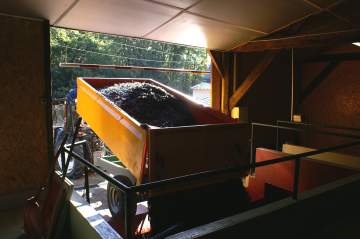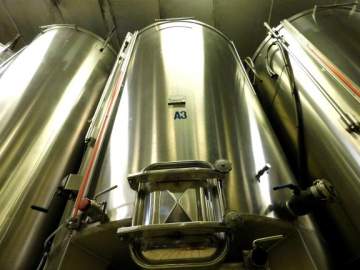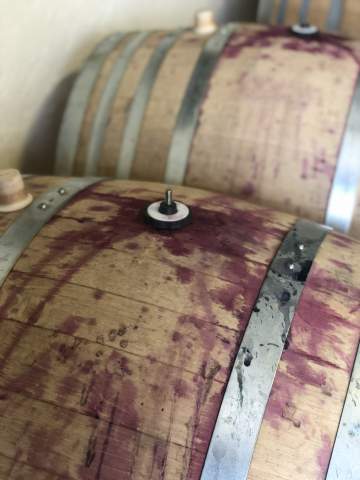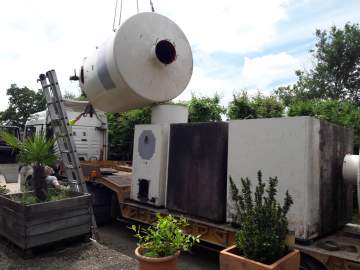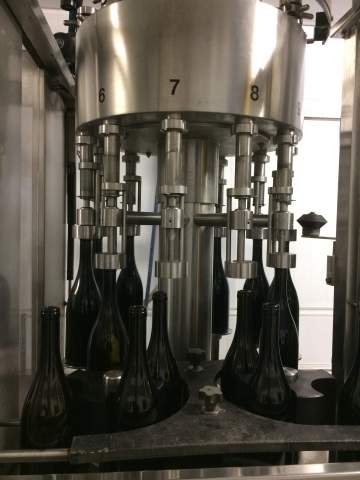Vinification
Return
Between Arts & Crafts
- The rosés wines are produced from red grapes, but the vinification is the same as for whites, with a very short skin contact period, of a few hours and fermentation at low temperature.
- For the red wines :The particularity in the vinification of the red wines is that the juice is fermented with the skins, pips and stalks. This gives the wines their colour and their tannins. The red grapes are destemmed and crushed, and the must is transferred to a fermentation vat, where the sugar contained in the grapes turns into alcohol. Fermentation lasts 5 days for Anjou Rouge. After fermentation, the skins can remain in contact with the wine for two week maceration period. The fermented juice is separeted from the lees and transferred into vats or directly into wooden casks. The wine obtained in this way in the free-run wine. The lees are then presses to extract the remainig juice, which is called the press wine. The malo-lactic fermentation sometimes takes place at the same time as the alcoholic fermentation, but generally afterwards. This makes it the wines smoother, less harsh and acidic. For the Anjou Villages and Anjou Villages Brissac.
- For the white wines : Dry white Anjou, a short maceration and a vinification at low temperature, maturing generally short and the wine is usually bottled in the year it was harvest.
- For the Crémant de Loire, this is a long process, which includes the addition of a "liqueur de tirage", followed by a remuage to bring the yeast deposit down into the neck bottle which is then expelled in the degorgement by the pressure from the carbon dioxide contained in the wine, and finally the addition of "liqueur d'expedition" and more wine, to obtain the required sweetness and to fill up the bottle.
- For the sweet wine : the grapes picked to produce sweet white wine have a high sugar content, they are very ripe and, in the case of the Bonnezeaux, they are attacked by botrytis cinerea (noble rot) which dries out the berries and concentrates the sugar. The vinification is identical to that of dry white wine, but the fermentation is stopped before the sugar has completely turned to alcohol. The sweetness of the wine will depend on the amount of the residual sugar
